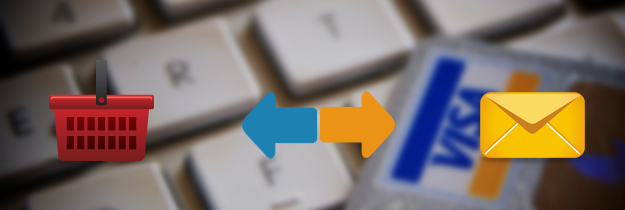
By Allison Howen, from ‘Net Features – http://bit.ly/S8BFZH
Email is a key component in most retailers’ digital marketing strategies – and for good reason.
This channel helps to not only retain, convert and engage customers, but it can also be used to nurture relationships and obtain unique consumer insights. In fact, a 2013 MarketingSherpa study reveals that email produces a positive ROI for 60 percent of marketers. The challenge, however, is keeping email strategies fresh so that campaigns continue to catch the attention of subscribers and improve retailers’ bottom lines.
This is why it is important that merchants continuously re-evaluate their email marketing strategies. In doing so, they can identify underperforming campaigns and test new strategies. For inspiration of how to freshen up your campaigns, consider these five effective email strategies for retailers below and be sure to read Part One of this series as well.
1. Nurture the Relationship
It is typically easier (and takes less resources) to retain customers than to acquire new ones, so why not use email to nurture existing relationships? Children’s retailer Carter’s does this by reaching out to previous customers with a “we’ve missed you” message.
In addition to the heartfelt message, Carter’s provides a 25 percent off coupon within the email as an incentive for subscribers to visit the company’s traditional brick-and-mortar locations or online store. Plus, the message notes that the coupon is valid for less than a week, which provides subscribers with a sense of urgency, prompting them to take immediate action.
2. Obtain Consumer Reviews
A 2013 BrightLocal study reveals that 79 percent of consumers trust online reviews as much as personal recommendations, which shows how influential these small pieces of user-generated content are. In order to increase the amount of consumer reviews on your site, consider asking customers to review their recently purchased products.
Take Sephora for example. This beauty retailer leverages email to thank customers for their purchases and to ask for reviews. Within the email message, Sephora makes it simple for consumers to take actions like pin or review the recently purchased products. This strategy likely not only increases the number of consumer reviews on Sephora’s website and drives the number of pins from the retailer, but it is also personalized, which is a key to email marketing success according to a recent Experian Marketing Services’ study.
3. Stock Alerts
Few things are more frustrating to a consumer than discovering a product that they intended to purchase is out of stock. Although the best way to avoid this issue is by keeping virtual shelves full, online retailers can also offer back-in-stock alerts to prevent customers from visiting a competitor’s website. This strategy can prove pretty effective, as a recent Listrak study reveals that back-in-stock alerts can provide retailers with as much as a six dollar return per email sent.
Smashbox is an example of a retailer that has implemented this strategy on its website, offering visitors the ability to receive back-in-stock alerts. In the example shown below, however, Smashbox’s message notified me that the product was no longer available. In the email, the beauty retailer apologized for the discontinuation of the product and offered to help me find a new product through a recommendation from one of the company’s beauty advisors. Although it was not the news I hoped for, the retailer took the right steps by keeping me informed and offering help via customer service.
In cases when the product is not discontinued, retailers should notify consumers when the product is available and include a direct link to the product page to make it simple for consumers to take immediate action. Plus, retailers should include a sense of urgency within the email, noting that supplies are limited. Moreover, retailers can take the campaign a step further by offering the consumer an incentive, like free shipping, as compensation for their patience.
4. Reconsider the Birthday Email
Many retailers send birthday emails with coupon codes or promotions as a way to get personal with subscribers and nurture the consumer relationship. Although this is a good strategy, it often leads to subscribers receiving an influx of promotional birthday messages in the weeks leading up to their big day.
Sephora, however, takes a different approach. For example, the beauty retailer sent me a birthday message that was two months late. Upon seeing the subject line, I wondered how the retailer obtained the incorrect birth date, however, the promise of a gift within the subject line was enough to entice me to open the message. Once opened, the message acknowledged it was a belated birthday message and provided me with a promotional code for a free gift. Since I wasn’t distracted by the choices of other birthday promos in my inbox, I ended up taking immediate action to not only redeem the gift, but also purchase a few other items.
This strategy was definitely outside of the box and a bit of a gamble, but it ended up not only grabbing my attention but also obtaining a conversion. Plus, who doesn’t like a birthday gift (even if it’s late)?
5. Get Customer Feedback
Surveys are a great way to obtain customer feedback. In addition to on-site surveys, retailers can also leverage email to learn more about their customers’ preferences.
In fact, Victoria’s Secret leverages this strategy to obtain consumer preferences, as well as to learn more about their subscriber base. The retailer’s email linked to a survey in which subscribers provide data about their online and in-store purchasing frequency, competitor insights, favorite stores other than Victoria’s Secret and awareness of the retailer’s loyalty card benefits.
Editor’s Note: Don’t forget to check out Part One, which features five additional email strategies to consider, including promoting slow sellers and driving traffic to other channels.
